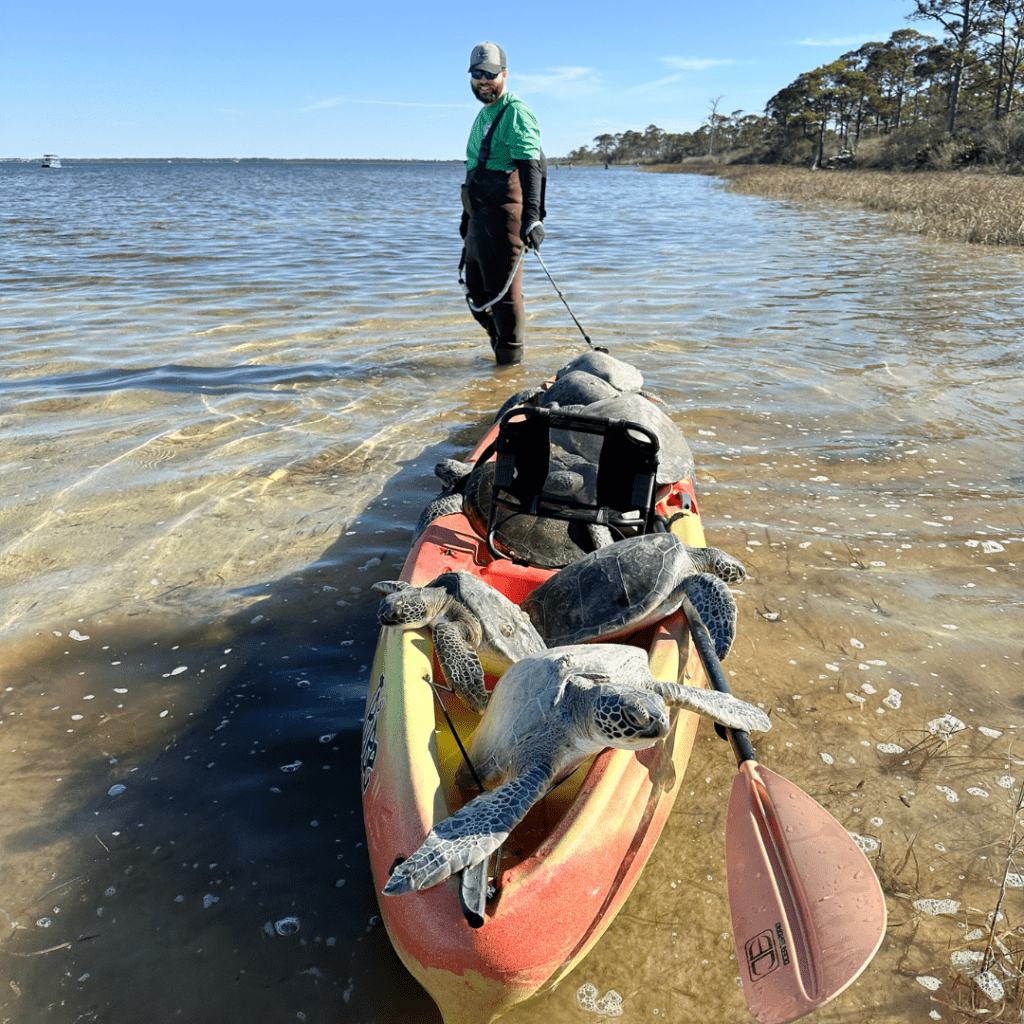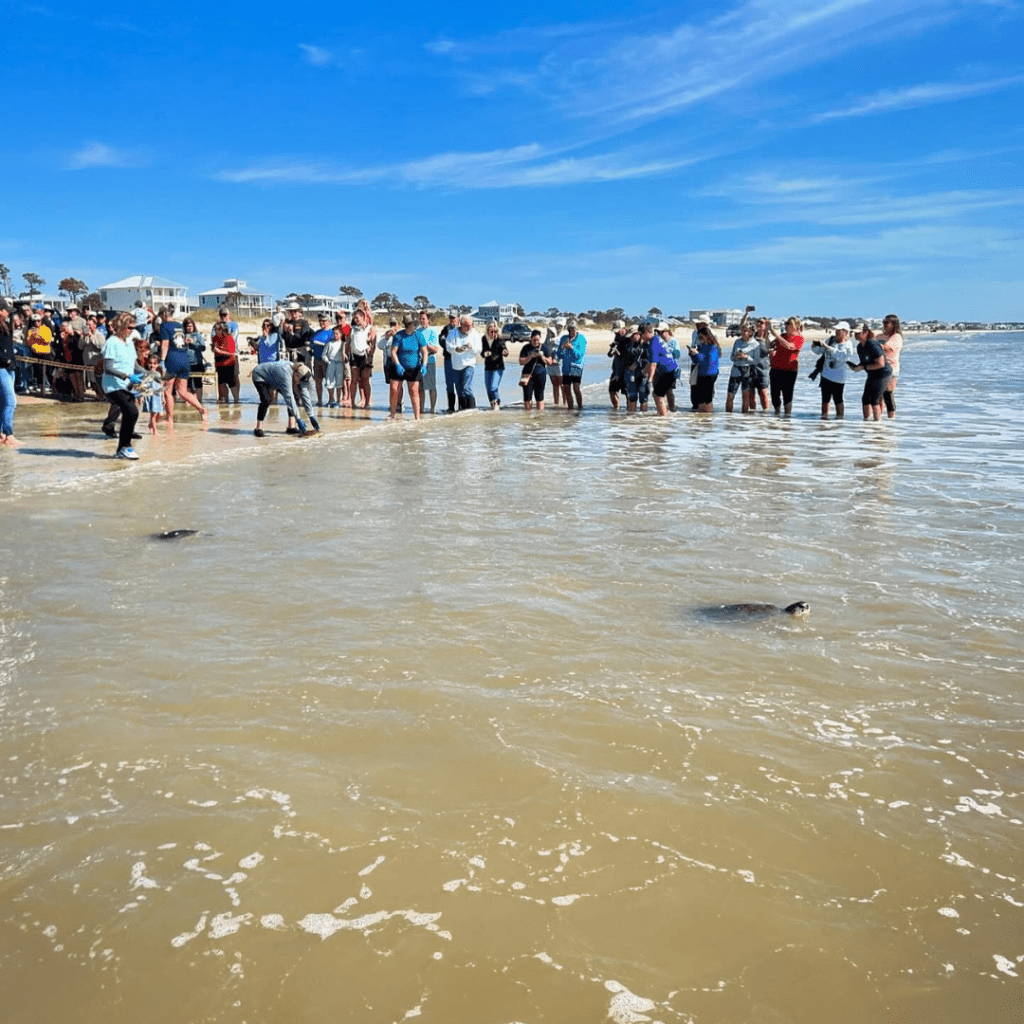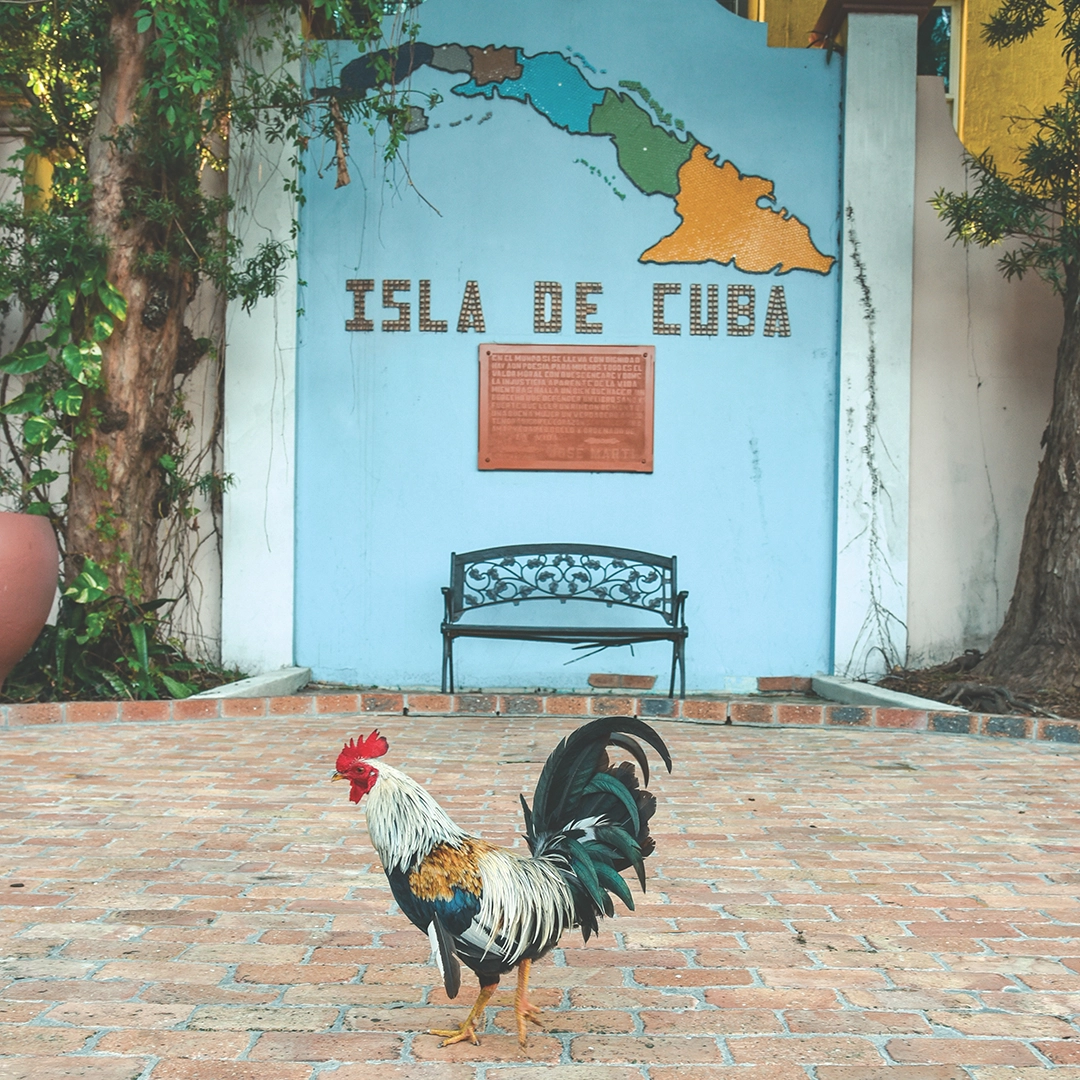by Helen Bradshaw | February 5, 2025
Saving Florida Sea Turtles Shell Shocked by January’s Freeze
In the frosty Panhandle, 1,200 sea turtles were rescued by volunteers wearing wetsuits and wielding makeshift sleds

As Panhandle residents scrambled to turn tennis rackets into snowshoes and boogieboards into sleds to frolic in January’s historic snowstorm, volunteers at Cape San Blas were digging through their garages for supplies for a different reason: they needed to find ways to transport hundreds of cold-stunned turtles out of the ocean and to safety.
“I was walking the shore, and you would see them in the water, floating, and I went out to retrieve several from the water. I picked (the turtles) up out of the water, and we transported them on sleds,” says Ranci Porter, a volunteer with Gulf and East Bay Sea Turtle Patrol. “You could only get a couple on there, depending on how large they were.”
Over the course of six days, hundreds of green sea turtles ranging from 20 to 200 pounds slid across snowy beaches on makeshift sleds toward warm trucks waiting to take them away from the shock-inducing ocean. When exposed to prolonged water temperatures below fifty degrees Fahrenheit, the cold-blooded reptiles can become weak and disoriented. They might float to the surface or, like many of the turtles Porter encountered, wind up stranded on mucky shores—a potentially fatal situation. “That’s what they do. They’re too weak to swim,” Porter explains.
Cold-stunned turtles, by and large, are healthy turtles.
—Allen Foley
So, across the Panhandle, just like many Floridians experiencing Sunshine State snow for the first time, volunteers and officials got creative. To rescue the reptilians in time, the teams used whatever means necessary to create their makeshift turtle toboggans. “We bought cement mixing trays that we used as sleds,” says Allen Foley, a wildlife biologist with the Florida Fish and Wildlife Conservation Commission. “It’s people just coming up with ideas, trying things.”
Sliding on sleds and sitting in kayaks, resting on boats and nestling into the crooks of rescuers’ arms, the turtles began their journeys to the Gulf World Marine Institute in Panama City Beach.
Across the Panhandle, officials and volunteers rescued 1,200 sea turtles in total.
Mass cold-stunning events like this one are unusual for the area, but they’re not entirely unheard of either, especially as extreme weather events have become more frequent. Since the start of the 21st century, the FWC has responded to three similar incidents. So, when sea turtle patrol volunteers like Porter heard of the impending freeze, they started organizing.

“Cold-stunned turtles, by and large, are healthy turtles,” Foley says. “They’re not injured, they’re not sick, they’re just temporarily stunned, and they recover quickly. There will be some mortality, but most will survive, and most will recover pretty quickly and be released.” That was the case for most of the collected turtles, who, after a few days spent warming up to a normal body temperature at Gulf World, were ready to return to the Gulf. Leading up to the big send off last week, there may have been more sea turtles cruising around Panama City Beach in pickup trucks than vacationers.
Quite the going-away party unfolded on the beach, as 700 people gathered to watch the turtles make their dash into the ocean. This time around, however, no sleds were needed to move the rehabilitated reptilians, Porter says. “It was fantastic. It really was. And (the turtles) were so excited. Their flippers were just go go, and they hit the water, and they were just gone.”
For more information on how to get involved with the Gulf and East Sea Turtle Patrol, visit gulfandeastbayturtlepatrol.org.





